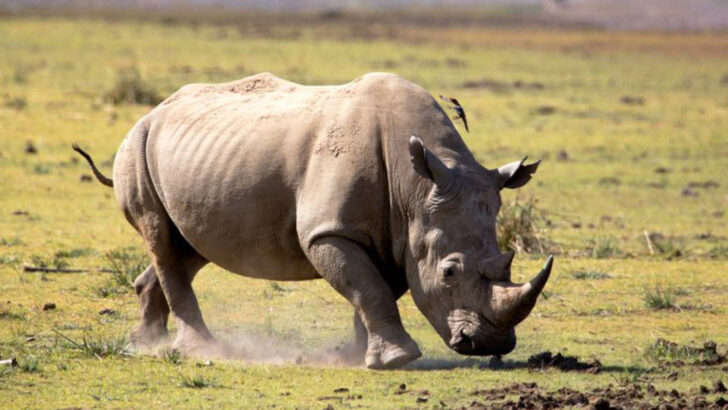The grizzly bear isn’t at the top of the food chain—not always.
Sure, it’s massive. It’s fast. It can crush bones with a single swipe. But out there in the wild, some animals don’t back down. Some can fight back—and win.
From stealthy assassins to brute-force monsters, nature has a few surprises up its sleeve. Whether it’s sheer power, deadly venom, or tactical genius, these 13 animals bring something to the table that could topple even a grizzly.
Think the bear is unbeatable? Think again.
Elephant

In the wild terrains of Africa and Asia, the elephant reigns supreme. With a weight of up to 14,000 pounds and towering at 13 feet, it commands respect. Its tusks serve as formidable weapons, while its thick skin provides protection.
Imagine a grizzly encountering such a giant; the bear would likely think twice before engaging. Elephants are not just brawn; they possess intelligence and social structures rivaling that of smaller mammal communities.
Their ability to communicate over long distances using infrasound adds to their mystique, making them fascinating giants.
Hippopotamus
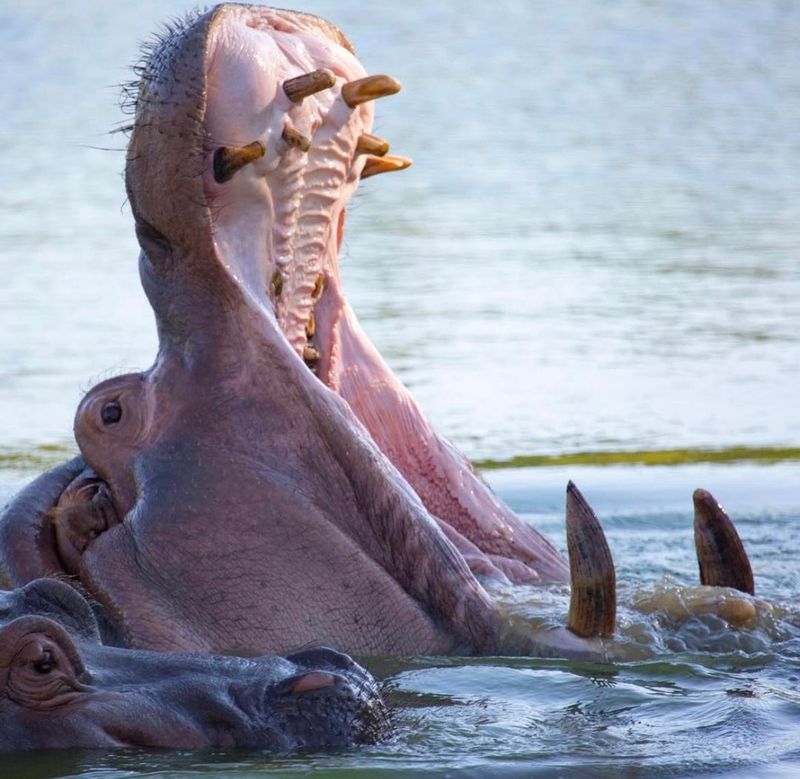
Beneath a seemingly docile demeanor lies the hippopotamus’s true power. Known for their territorial nature, hippos can weigh up to 4,000 pounds. Their jaws can open 180 degrees, delivering a bite force that can crush bones.
A grizzly bear, despite its strength, would face a serious challenge if it dared to cross paths with a hippo. Often found lounging in African rivers, these creatures are deceptively swift on land, capable of outrunning humans over short distances.
Their role in ecosystems as ecosystem engineers further highlights their importance.
Rhinoceros
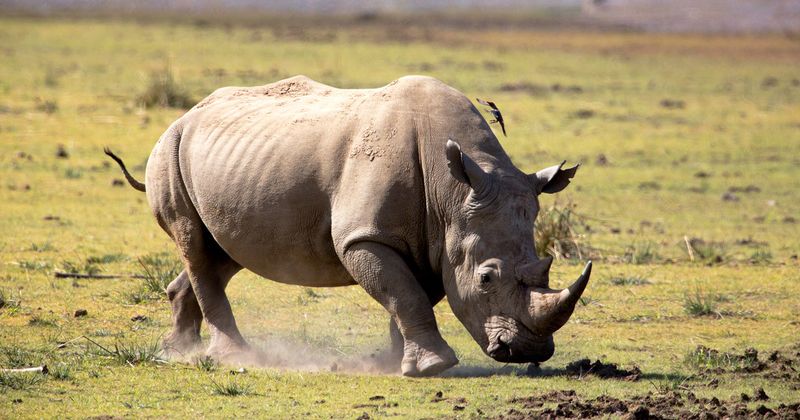
The rhinoceros, with its impressive horn, stands as a testament to nature’s might. Weighing between 2,200 and 7,700 pounds, these creatures are armored tanks capable of charging at immense speeds.
Their thick skin acts like natural armor, making them impervious to most predators. Picture a grizzly attempting to wrestle with a rhino; the odds are not in the bear’s favor.
Rhinos are also known for their keen sense of smell, which aids them in detecting threats from afar. Their conservation status remains a pressing issue, underscoring their ecological importance.
Anaconda
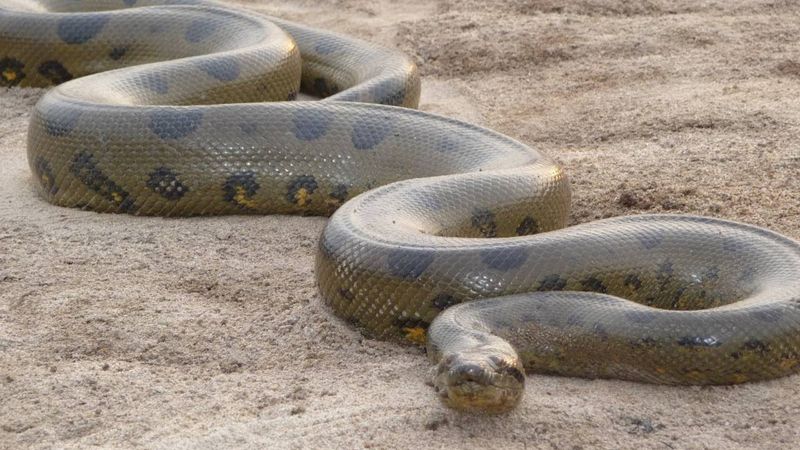
Slithering silently through the Amazon rainforest, the anaconda is a master of ambush. These snakes can reach lengths of over 30 feet, using their muscular bodies to constrict prey with lethal precision.
Imagine a grizzly bear wandering into the water where an anaconda lurks; the snake’s stealth and power could overwhelm even a bear. Anacondas are impressive swimmers, utilizing rivers as hunting grounds.
While they primarily target smaller mammals, their size makes them a formidable presence in South America. Their ability to sense heat aids in hunting, adding to their predatory prowess.
Gorilla
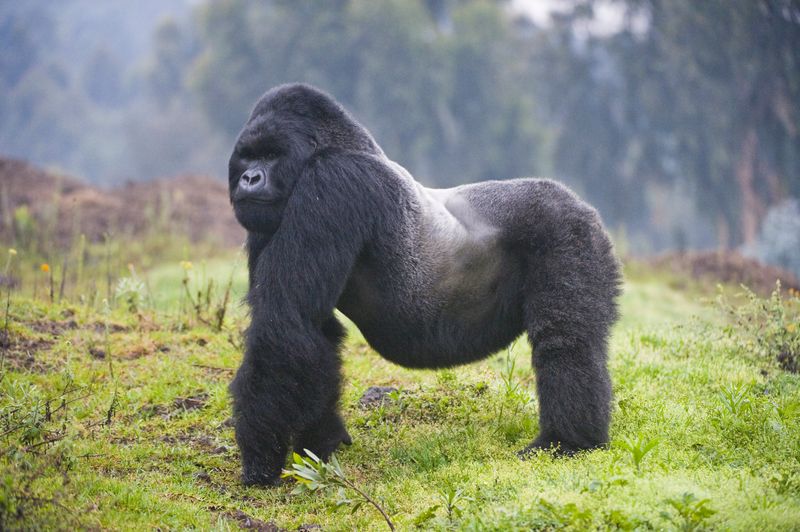
In the dense forests of Africa, the gorilla exhibits a unique blend of strength and intelligence. A silverback, the dominant male, commands with authority and can weigh up to 440 pounds.
While generally peaceful, if threatened, a gorilla’s strength is unmatched, with the ability to lift over 1,800 pounds. A confrontation with a grizzly would be a battle of colossal might.
Gorillas communicate through complex vocalizations and gestures, showcasing intelligence akin to that of humans. Their family groups are tightly knit, with bonds that ensure survival in the wild.
Kodiak Bear
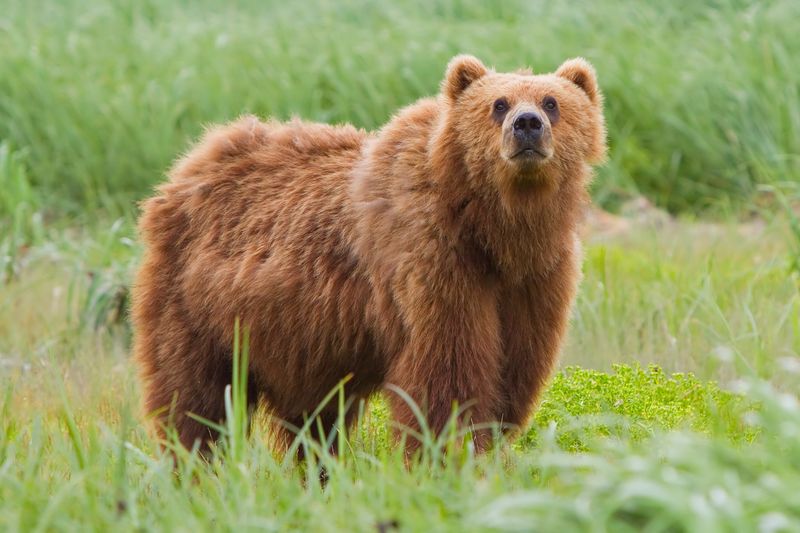
In the wilds of Alaska, the Kodiak bear reigns as a giant among bears. Larger than a grizzly, it can weigh over 1,500 pounds and stand 10 feet tall. Its sheer size and strength are enough to challenge any contender.
If a grizzly were to encounter a Kodiak, it would face a formidable opponent. Kodiak bears are adept fishers, relying on salmon runs for sustenance. Their solitary nature belies a complex social structure that emerges during feeding time.
This blend of power and adaptability makes them fascinating creatures in the bear hierarchy.
Crocodile
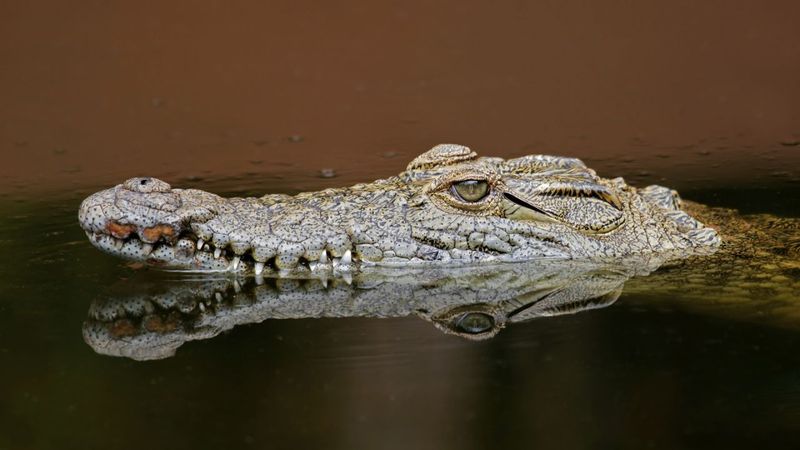
Lurking in the waters of Africa, the Nile crocodile is a fearsome predator. Known for its ambush tactics, it can grow up to 20 feet long and weighs 1,650 pounds. Its bite force is unmatched, capable of crushing the bones of any prey.
A grizzly bear would be wise to avoid crossing paths with such a creature. Crocodiles have been around for millions of years, evolving into efficient hunters.
Their patience and stealth make them masters of the waterways, where they await their next meal. Their prehistoric lineage adds to their mystique.
Tiger
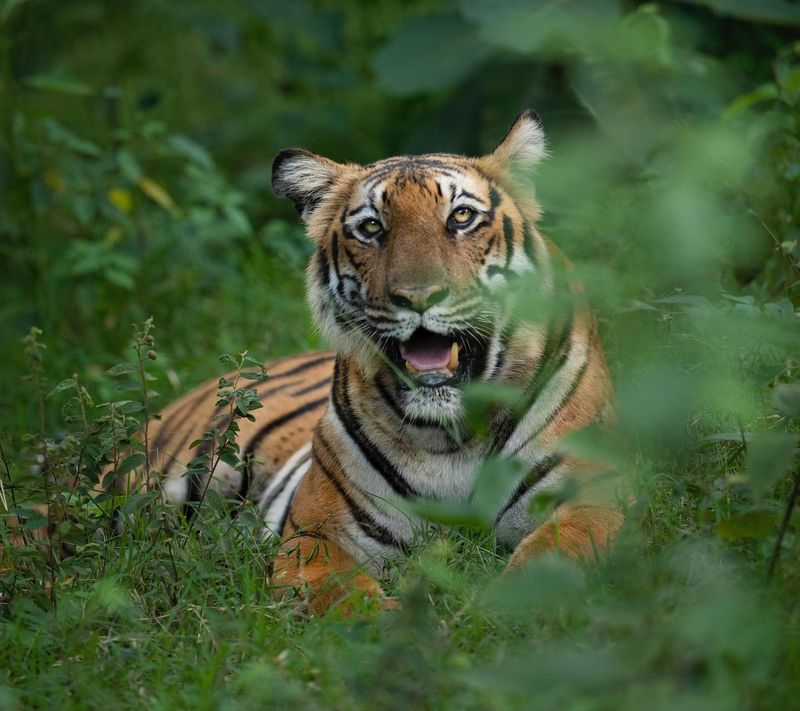
With a majestic presence, the tiger is an apex predator in the jungles of Asia. Weighing up to 670 pounds, its strength and agility are second to none. A grizzly bear encountering a tiger would face fierce competition.
Tigers are solitary hunters, capable of taking down prey much larger than themselves. Their powerful jaws and sharp claws make them formidable opponents.
Tigers are also known for their unique communication, through roars and scent markings. This adaptability ensures their dominance across varied terrains, from dense forests to open grasslands.
Polar Bear
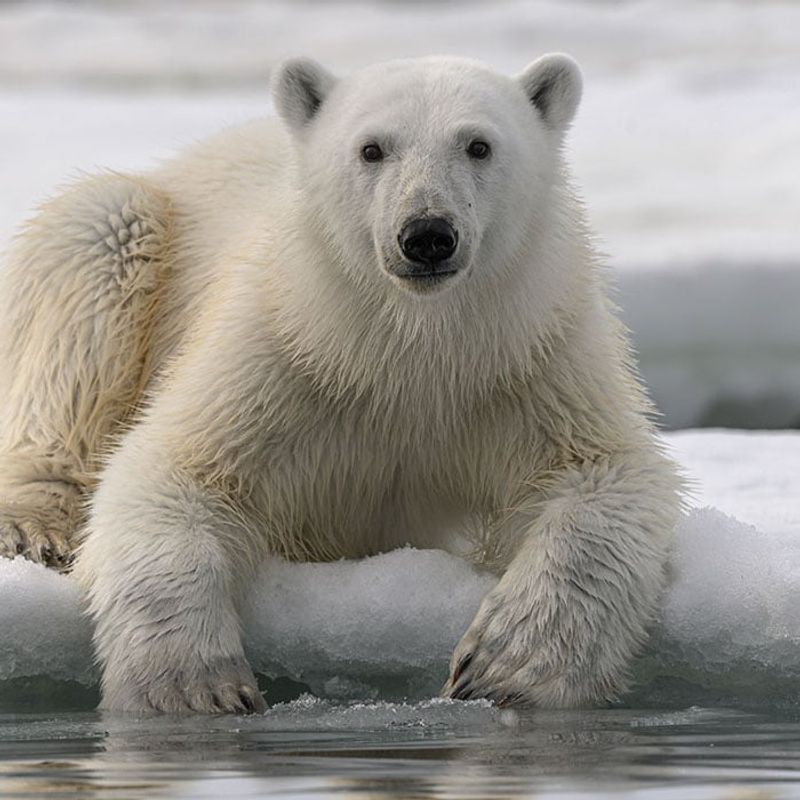
In the frigid realms of the Arctic, the polar bear is king. Larger and stronger than its grizzly cousin, it can weigh up to 1,700 pounds. Its thick fur and layer of blubber provide insulation against the cold, while its powerful limbs make it a proficient swimmer.
If a grizzly were to wander into polar bear territory, it would face a fierce contender. Polar bears rely on sea ice to hunt seals, showcasing an impressive blend of strength and endurance.
Their ability to adapt to harsh environments is a testament to their resilience.
Komodo Dragon
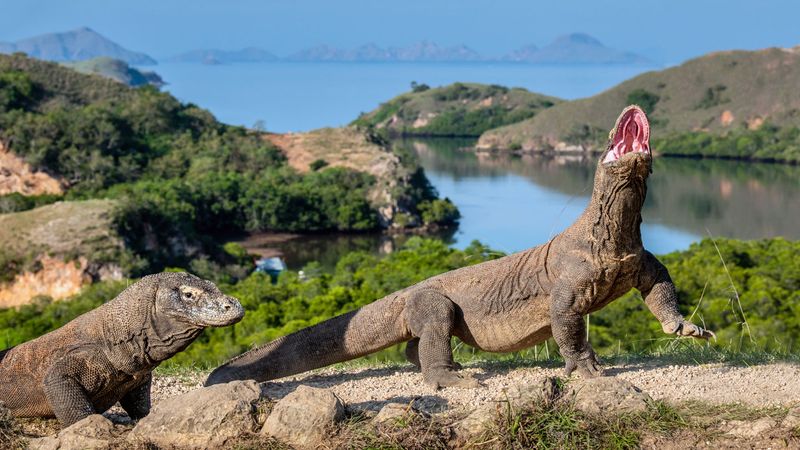
The Komodo dragon, native to Indonesia, is a creature of legend. Growing up to 10 feet long, it is the largest lizard on Earth. With venomous saliva and a powerful bite, it can bring down prey much larger than itself.
A grizzly bear would find a formidable adversary in this dragon. Komodo dragons are ambush predators, relying on stealth and patience to capture their prey. Their rugged habitat has shaped them into resilient hunters.
This evolutionary marvel continues to fascinate scientists, as new discoveries about their biology emerge.
Cape Buffalo
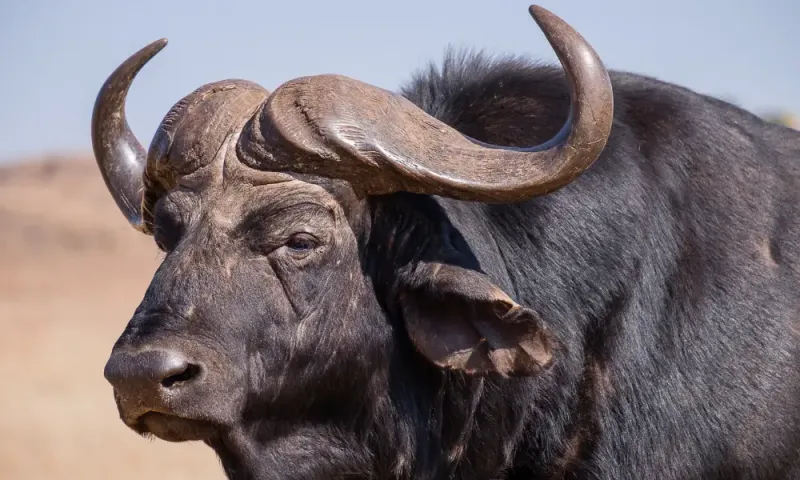
With a reputation for being aggressive and unpredictable, the Cape Buffalo is a force to be reckoned with. Known as the ‘Black Death’ in Africa, its immense strength and sharp horns make it a formidable opponent.
The Cape Buffalo’s herd mentality adds to its defensive prowess, often resulting in coordinated attacks against predators. Imagine a creature with the power to flip a car and you’ll understand why even seasoned hunters tread carefully.
Interestingly, these buffalo are responsible for more hunter fatalities on the continent than any other animal. Their fearless nature and group solidarity are key to their survival in the wild.
Gaurs (Indian Bison)
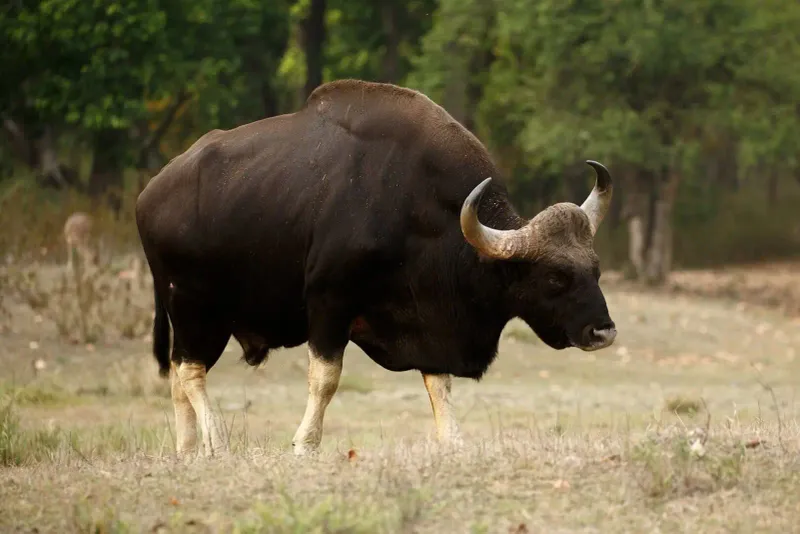
Gaurs, or Indian Bisons, are the largest bovines in the world, and their incredible size and strength are awe-inspiring. Standing over six feet tall at the shoulder, these giants possess a muscular build that could overwhelm a grizzly bear.
Their power is complemented by their sharp horns and a thick neck, making them formidable in combat. Gaurs are usually peaceful grazers, but when threatened, they turn into fierce defenders of their herd.
A fascinating fact is that Gaurs have been known to fend off tigers, which are among the top predators in their habitat. Their resilience and strength are legendary in the animal kingdom.
Cape Hunting Dog
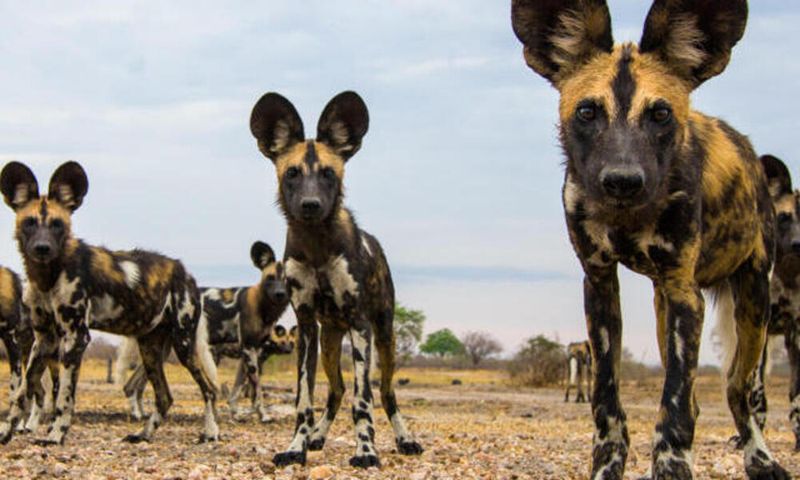
Cape Hunting Dogs, or African Wild Dogs, are a testament to the power of teamwork. What they lack in size compared to a grizzly bear, they make up for in strategy and numbers.
These social animals coordinate intricate hunting strategies, often bringing down prey much larger than themselves. Their endurance and speed are remarkable, allowing them to outmaneuver most predators.
These dogs hold the record for the most successful hunts among predatory mammals, emphasizing the effectiveness of their cooperative approach. In a group, they are an unstoppable force.

